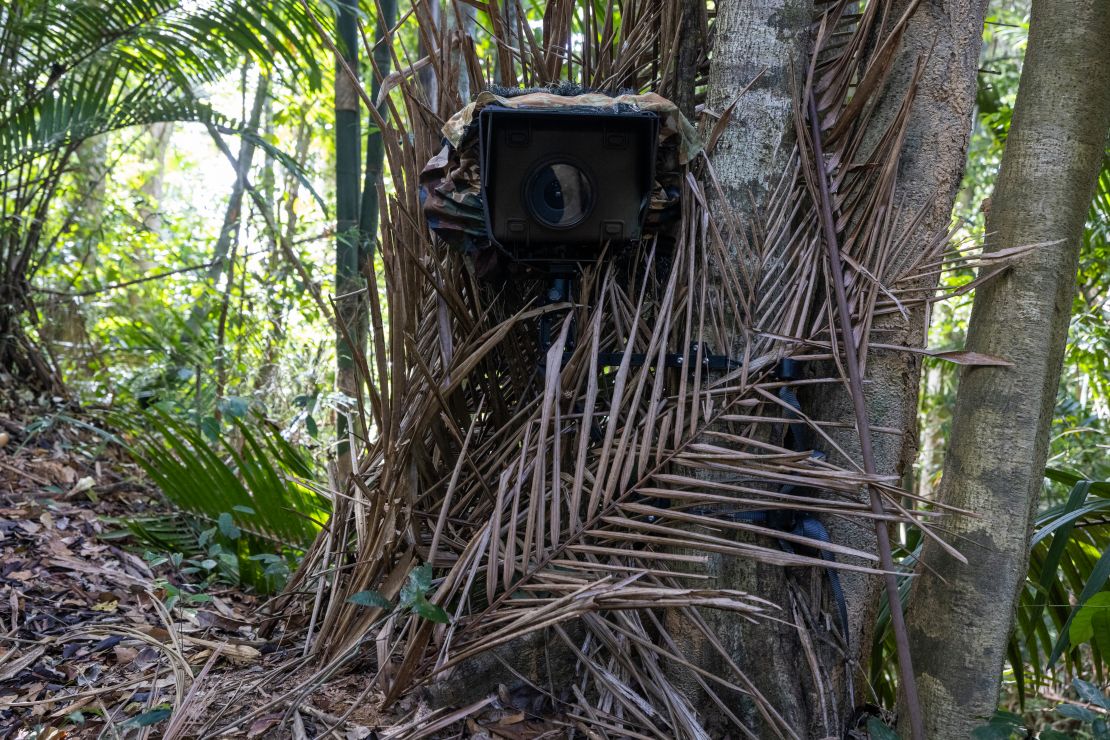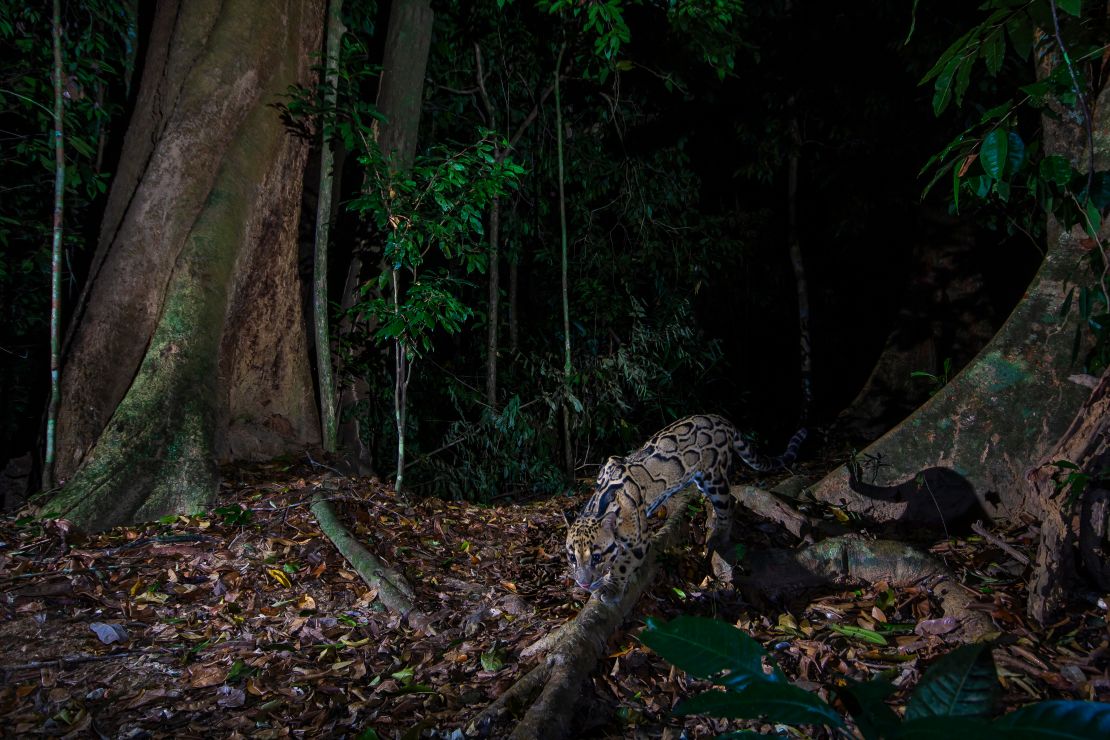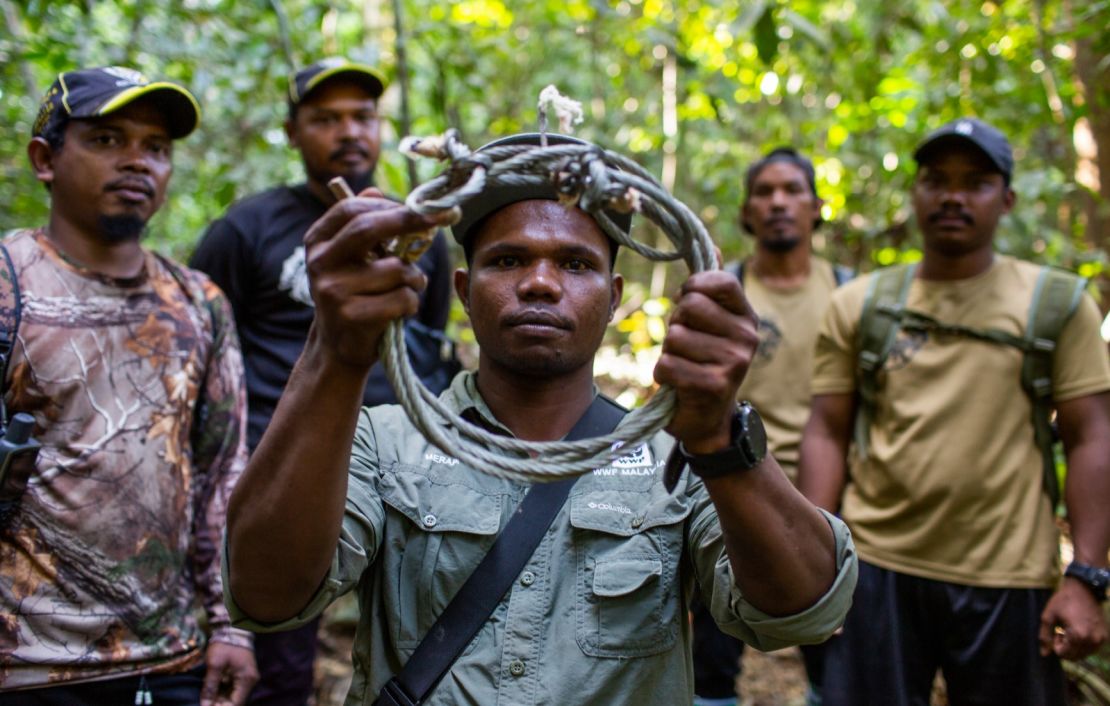Emmanuel Rondeau has photographed tigers across Asia for the past decade, from the remotest recesses of Siberia to the pristine valleys of Bhutan. But when he set out to photograph the tigers in the ancient rainforests of Malaysia, he had his doubts.
“We were really not sure that this was going to work,” says the French wildlife photographer. That’s because the country has just 150 tigers left, hidden across tens of thousands of square kilometers of dense rainforest.
“Tiger numbers in Malaysia have been going down, down, down, at an alarming rate,” says Rondeau. In the 1950s, Malaysia had around 3,000 tigers, but a combination of habitat loss, a decline in prey, and poaching decimated the population. By 2010, there were just 500 left, according to WWF, and the number has continued to fall.
The Malayan tiger is a subspecies native to Peninsular Malaysia, and it’s the smallest of the tiger subspecies in Southeast Asia.
“We are in this moment where, if things suddenly go bad, in five years the Malayan tiger could be a figure of the past, and it goes into the history books,” Rondeau adds.
Determined not to let that happen, Rondeau joined forces with WWF-Malaysia last year to profile the elusive big cat and put a face to the nation’s conservation work.
It took 12 weeks of preparations, eight cameras, 300 pounds of equipment, five months of patient photography and countless miles trekked through the 117,500-hectare Royal Belum State Park… but finally, in November, Rondeau got the shot that he hopes can inspire the next generation of conservationists.
“This image is the last image of the Malayan tiger — or it’s the first image of the return of the Malayan tiger,” he says.
‘A million-dollar shot’
Regular camera traps — like the hundreds already used by the park’s scientists, researchers and conservationists — are typically the size of a large smartphone and activated by broad-range motion sensors.
But Rondeau’s camera traps were much bigger, with each unit containing a high-resolution DSLR camera in a waterproof casing, as well as flashes that were installed on the tree canopy above. The camera is triggered by a single infrared beam, allowing Rondeau to set up the exact shot he wants.

“I’m trying to find the place along the trail that looks the most beautiful,” explains Rondeau. “I frame the image exactly as if the tiger was there — I know by the centimeter where the tiger is going to be.”
Rondeau didn’t work alone. A team of rangers, largely made up of people from the indigenous Jahai Orang Asli tribe who have lived in the area for generations, helped him to navigate the vast, rugged landscape and set up the camera traps.
It took over a week to install the cameras: Rondeau and the rangers transported the equipment across the large lake in the middle of the park, avoiding having to carry it over uneven terrain. The batteries would also need to be changed monthly and the images collected from the memory cards manually, so finding accessible spots with high wildlife traffic was key.
At first, there was little activity. One camera was overrun by an ant colony, and another was destroyed by an elephant.
But then, five months in: a tiger looks directly into the camera as it steps across dried leaves and thick tree roots, the verdant rainforest stark against its iconic orange and black-striped coat.
“We finally got the shot,” says Rondeau. “It was a big relief.”
WWF compared the photo with other images in its database, but didn’t find a match with known tigers in the area, says Azlan Mohamed, manager of tiger protection and monitoring for WWF-Malaysia.
“We suspect that it’s a sub-adult — it’s not fully grown yet, based on the photos,” says Mohamed, adding that tigers typically stay with their mothers for at least two years, but because no other adults were spotted by nearby camera traps, “this particular tiger probably just separated from the mother, to try to establish their own range.”
“We didn’t expect that we would get such an image, because it’s very rare,” he says.
The tiger is an iconic species in Malaysia — featured in the logos of everything from the country’s football team to the national bank — so saving the big cat has a personal meaning too, says Carol Debra, communications manager for WWF-Malaysia.
“Tigers have been in our culture for so long, it’s a national emblem,” says Debra. “That image, for us, it symbolizes both urgency and hope.”
“To have that one tiger pass by that specific area and actually look at the camera, it’s a million-dollar shot. This is like a sign from nature, it’s like the tiger is saying, ‘I’m still here.’ It’s a mandate for us to intensify efforts to save the tiger,” she says.

‘Guardians’ of the wilderness
The photo gives a small glimpse into Malaysia’s conservation efforts, which have been pushing to reverse the downward trend of its tiger population.
In 2006, Malaysia’s government set up the Malayan Tiger Conservation program to unify government and NGO efforts, creating the National Tiger Action Plan that aimed to double the then 500-strong tiger population to 1,000 by 2020.
But the population fell rather than increased, largely because of the “snaring crisis” that has been a huge issue for wildlife across Southeast Asia, says Stuart Chapman, the lead for WWF’s Tigers Alive Initiative. “It’s the single factor that resulted in the extinction of tigers in Laos, Cambodia, and definitely Vietnam over the last 20 years,” he says.
Snares are often set to catch animals for bushmeat or to sell in the illegal wildlife trade, but they are “completely indiscriminate,” says Chapman — which means they often catch and kill tigers, as well as animals like deer or wild boar that tigers prey on, impacting their food source, too.
Snares have been found across Malaysia’s rainforests over the past decade, and at its peak in 2017, rangers in Belum were finding hundreds of active snares on the forest floor, according to WWF figures.
At the time, the organization says it had just 10 people on the ground, but the dire situation spurred the country into action. WWF collaborated with international and corporate partners, like Maybank, to recruit more rangers from local communities to traverse the forest, looking for snares, scouting for poachers, and setting up camera traps.
Since 2018, patrol teams have increased from three to 22, with more than 100 rangers — which has resulted in the number of active snares falling by 98%, says Mohamed.

WWF has also been doing other work to rebalance the ecosystem, such as reintroducing tiger prey species like sambar deer, and improving the forest habitat to make it more suitable for these species, he says.
The government has also been ramping up its support for conservation. Over the past few years, a collaborative project funded by the United Nations has helped to restore forest ecosystems and crack down on wildlife crime, and in 2022, the government established a National Tiger Conservation Task Force and a Wildlife Crime Bureau to tackle wildlife poaching and trafficking.
These efforts are beginning to yield “positive signs in our landscapes. We see more signs of (tiger) breeding, and more individuals detected in our camera traps,” says Mohamed.
But there’s still more work to be done. With the population at a “tipping point,” there’s an urgent need to preserve shrinking forest habitats and bolster the rest of the species in the forest, to allow the tigers to thrive, he adds.
As a keystone species, tigers are essential to a healthy ecosystem – and without them, the 130-million-year-old rainforests around the Belum-Temengor complex could be threatened, too.
Rondeau hopes that images like the one captured in Belum can help raise awareness of Malaysia’s critically endangered tigers.
“They really are the guardians of those last wildernesses,” says Rondeau.
“This is one of the most majestic animals on the planet, and if we don’t move ourselves, this whole forest is going to go — because once the tiger is gone, then the rest is gone, too.”














